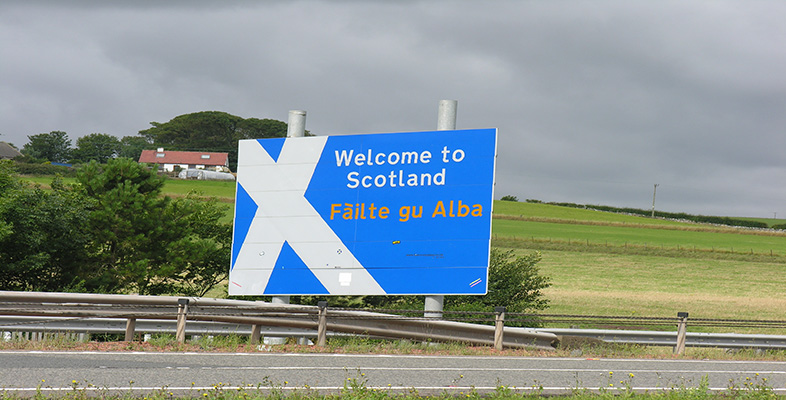5.2 Gaelic: some basics
5.2.1 Gaelic grammar – a taster
Gaelic is part of the ‘Indo-European’ family of languages and so is related, distantly, to languages like English and French, as is shown by the names for the numbers 1-3. Click on the audio links below to hear how these numbers are pronounced in Gaelic.
| Gaelic | Italian | French | Danish | English | |
|---|---|---|---|---|---|
| 1 | aon | uno | un | een | one |
| 2 | dà | due | deux | to | two |
| 3 | trì | tre | trois | tre | three |
Their shared ancestry also means that Gaelic grammar has a lot in common with these languages, although there are also some differences. For example, unlike English (but like French) the adjective in Gaelic usually comes after the noun. An example is Gleann Mòr where ‘gleann’ means ‘glen’ and ‘mòr’ means ‘big’. That is why the stress is on the last element in Highland names like Glenmore or Aviemore.
The following is a typical Gaelic sentence, with explanatory notes:
Tha mi a’ sgrìobhadh litir. (I am writing a letter.)
| 1 | 2 | 3 | 4 |
|---|---|---|---|
| Tha | mi | a’ sgrìobhadh | litir. |
- ‘Tha’ is the equivalent of ‘am’ in English. Although we say ‘I am’, ‘you are’, ‘he is’, it is always ‘tha’ in Gaelic, i.e.: ‘tha mi’, ‘tha thu’, ‘tha e’.
- Notice that the words are in a different order in Gaelic, ‘tha’ coming before ‘mi’.
- ‘A’ sgrìobhadh’ means ‘writing’: compare ‘scribe’ and ‘scribble’.
- ‘Litir’ means ‘a letter’: Gaelic doesn’t have the equivalent of English ‘a’ or ‘an’.
